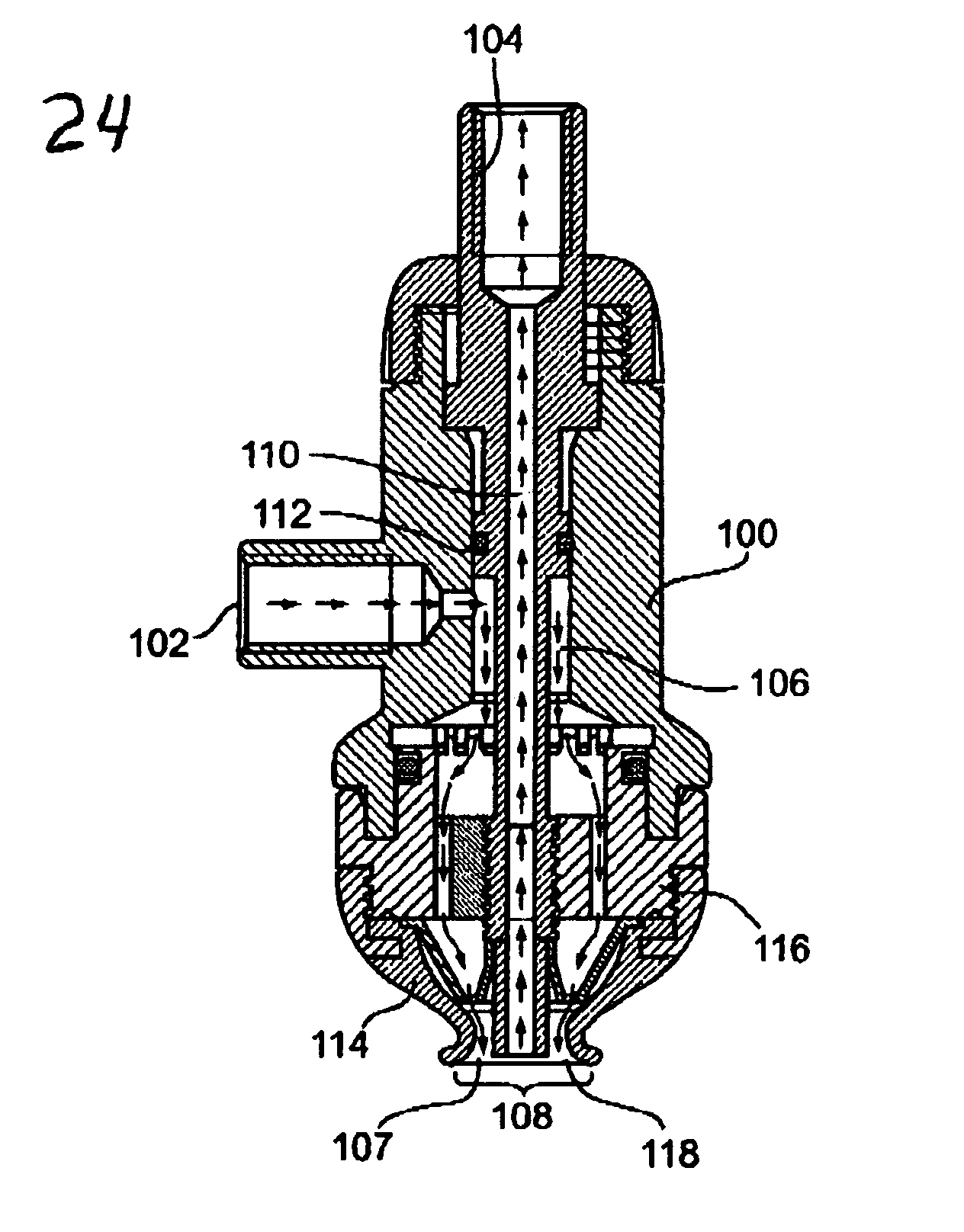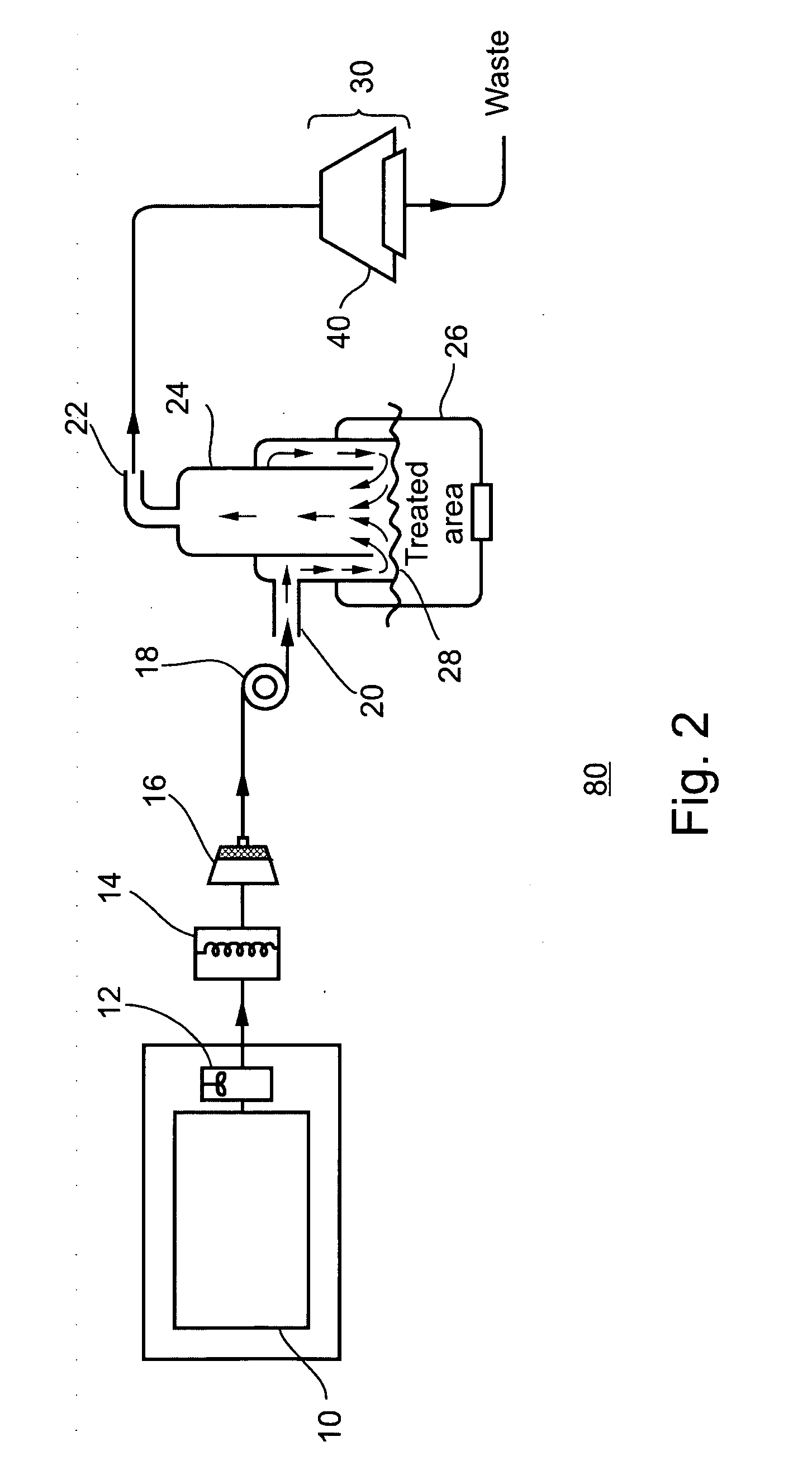Surgical procedures are generally painful and destructive to the healthy, neighboring tissues, resulting in scarring and abnormal pigmentation of the treated areas, for example, as described by Gambichler, T., Senger, E., Rapp, S., Almouti, D., Altmeyer, P., and Hoffman, K., in "Deep Shave Excision Of Macular
Melanocyte Nevi", Dermatol. Surg., Jul. 26 (7), 662-66 (2000), the need for administration of
anesthesia, and significant stress trauma to the patient, for example, as described by Augustin, M., Zschocke, I., Godau, N., Buke-Kirschenbaum, A., Peschen, M., Sommer, B., and Sattler, G., in "
Skin Surgery Under
Local Anesthesia Leads To Stress-induced Alterations Of Psychological, Physical And Immnune Functions", Dermat. Surg., November 25 (11), 868-71 (1999).
In addition,
surgical excision of certain lesions is often complicated by the presence of more than one
aberrant cell type, for example, as described by Crawford, J. B., Howes, E. L. Jr., and
Char, D. A., in "Conjunctival Combined Nevi", Trans-Am. Ophthamol. Soc., 97, 170-83 (1999), and is inappropriate for sensitive and precarious anatomical regions.
However, there remain the problems of pain and scarring associated with the intense heat required for
tissue ablation, poor results with attempts at
laser treatment of certain lesions, such as melanocytic and congenital nevi (Raulin, C. et al., same as above) and the importance of removal, rather than
ablation of the abnormal tissue for histological analysis to determine the character and extent of the
lesion.
However, no mention is made of control of enzyme activity once applied, or of a means of obtaining cells from the treated tissues.
However, the procedure described relates to preparation of cells for
tissue culture from tissue fragments rather than the therapeutic application of
cell removal from live tissue.
Furthermore, no provision is made for collection of cells from living tissue in situ
Enzyme stability is enhanced when dry, but
solubility and even dispersal of the enzyme
solid in the activating buffer is difficult, resulting in
poor control of enzyme activity at point of delivery.
However, the methods of treatment with these enzymes have been limited to topical application and
intradermal injection.
In addition to the discomfort and protracted character of such a
treatment regimen, no retention of cells from the lesions is made possible, necessitating conventional, surgical
biopsy methods prior to enzymatic treatment.
Thus,
cell collection or retention from the treated area is not possible and, as in other dermatological enzyme treatment protocols, no control of protease activity after administration is afforded.
Topical application, or injection of
proteases offers little control over the level of catalytic activity remaining in situ, with autoproteolytic and normal dermal lytic and acidic processes causing unpredictable degradation.
Conventional mechanical and non-mechanical methods of treating and removal of skin lesions such as razor-blade or scalpel excision, CO.sub.2
laser surgery,
cryosurgery, electrocauterization, and electroablation are associated with pain, stress trauma, bleeding, scarring,
contamination,
hyperpigmentation and disruption of adjacent and underlying tissue.
Active
shelf life of the protease is limited, and precise control of enzyme activity at the site of administration is virtually unattainable, once injection or topical application is completed.
None of the aforementioned examples, however, relate to the administration of
proteases for treatment of living cells, nor provide for ongoing, precise control of the activation of catalytic activity at the site of application.
However, powdered, lyophilized or granulated enzyme preparations are often difficult to disperse homogeneously in
diluent solutions.
Treatment without determining accurate diagnosis may remove the
lesion, but will often incur unnecessary scarring, recurrences, and financial hardships.
As mentioned above, previous methods of non-
surgical treatment of skin lesions, such as
laser surgery,
electrosurgery and chemical or enzymatic
ablation have not provided any means for obtaining cells from the lesions, necessitating the use of traditional surgical biopsy techniques for accurate diagnosis.
 Login to View More
Login to View More 


